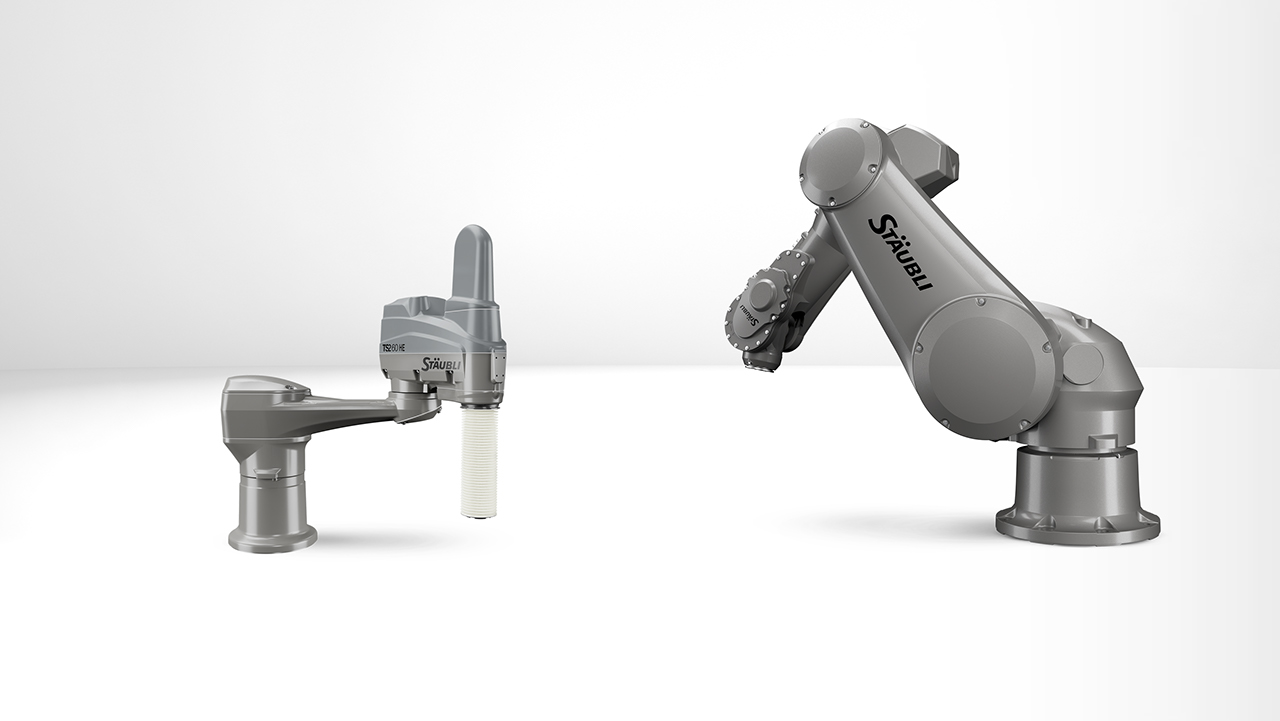- Europe
- Americas
- Asia and Middle East
- Africa and Oceania
SUCCESS STORY
New ways of processing meat
The Japanese company Mayekawa designs cutting-edge technological solutions for the food industry. For its integrated ham deboning system, the company chose Stäubli RX160 HE 6-axis robots that meet food standards.
CUSTOMER BENEFITS
- Revolutionary meat processing with maximum output
- Use of HE robots for a reliable process
- Avoidance of physically exhausting manual labor
- Combination of HE robot variants and NSF H1 oil for perfect performance in the food sector
TASK
Deboning with robots
An innovative solution for processing pork has come from Japan. The job of removing the bones from pork legs has been given to the pioneering HAMDAS-R robot system with three Stäubli six-axis RX160 HE machines operating as master butchers.
The specifications for robotics in a meat factory could not be more exacting. Chief among them are the strict hygiene requirements that apply to the handling of fresh meat. The processing line is disinfected daily with water and appropriate detergents.
Furthermore, expectations in terms of speed, precision and flexibility have been set high, as no fewer than 500 pork legs enter and leave the line per hour. The functionality of the robots deployed is stretched to the limits by the special conditions prevailing in the meat processing industry. Because no one piece of pork is the same as another, flexibility is required for high-speed processing.
SOLUTION
Splash-proof HE robots
For this demanding application, the Japanese use the HE version of the Stäubli RX160 which is specially designed to withstand the intensive cleaning processes in the food industry. The fully enclosed robots equipped with special gaskets conform to the IP 65 standard of protection. Use of the Stäubli overpressure unit increases the degree of protection even further: for example, the wrist meets the requirements of IP 67, meaning that it is watertight. The vertical internal cabling has also proved its worth. All the connectors are located under the robot pedestal where they are safe from water ingress.
Before the industrial robots receive their finishing coat of paint, the surfaces are subjected to a special treatment which increases their corrosion resistance and makes the entire casing less susceptible to mechanical damage. Highly stressed parts are made of stainless steel. The HE robot is thus perfectly equipped for meat processing.
The Japanese equipment manufacturer has come up with a hi-tech method of ensuring that the three RX160 HE robots achieve the required degree of precision in removing the bones from the pork. An X-ray system detects the position of the bones in the meat and calculates the exact incision line for the robots. A perfect solution, but one that is also subject to the vagaries of the meat processing industry, i.e. the meat hanging on its hook is liable to shift its position on the overhead conveyor within certain limits. In order to compensate for this factor, the robots must wield their wrist-mounted knives with precision and, at the same time, with sensitivity to avoid colliding with the bones.
CUSTOMER USAGE
Opening up new dimensions in meat processing
The three RX160 HE robots fulfill the above requirements with ease. They work with the precision, speed and reliability that is expected of a Stäubli machine, even when subjected to the rigorous daily cleaning routine that is typical of the food industry. As HE robots, they do not rely on additional protective covers, which save on cost and additional labor.
A great advantage in all handling of unwrapped foods is the use of food-safe NSF H1 grade oil in combination with Stäubli HE robots. Stäubli Robotics does not rely on standard lubricants but rather on oil developed in close collaboration with a partner company. The three RX160 HE robots are able to operate with H1 lubricant without any loss of performance and are not subject to any restrictions, as would be the case with machines supplied by certain market competitors.
The pioneering plant also contributes to the humanization of the work environment, since the manual deboning of pork is physically exhausting, which often leads to negative effects on health. The use of six-axis robots for processing meat opens up new dimensions in terms of productivity and efficiency.

